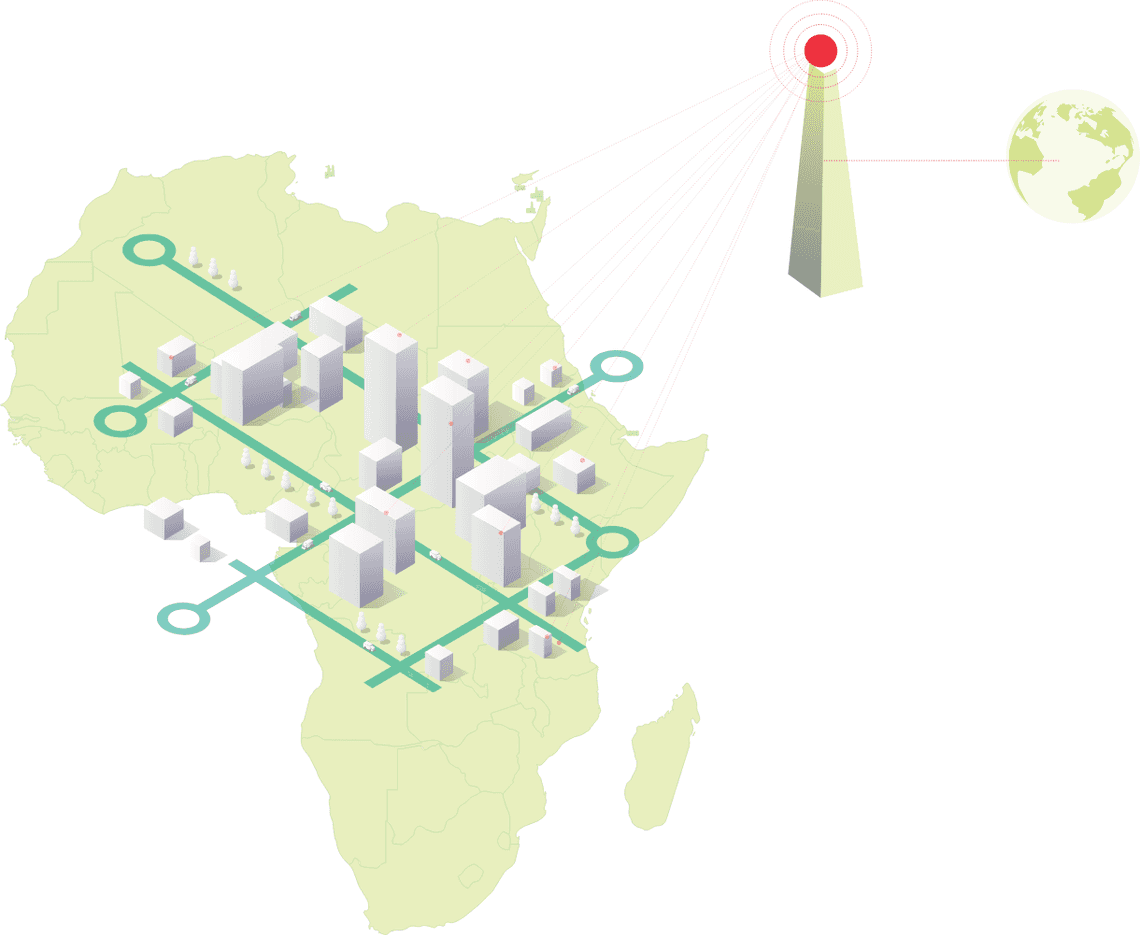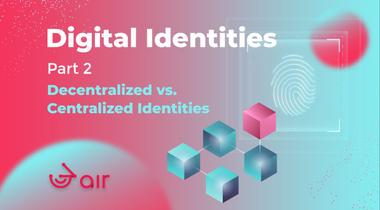Table Of Contents
3air’s goal is to bring affordable, high-speed Internet to as many people as possible. We believe that businesses and individuals in developing countries should have the same opportunities to communicate and transact online like we do in developed countries, in order to grow their local economy.
The internet forms the basis of today’s digital economy. Without it, you would not be reading this blog post, communicate easily with others, bank or work online.
This is why 3air’s connectivity is powered by K3 Telecom. We partnered up with K3 Telecom to use their innovative technology to help deliver broadband internet to businesses and end users. Combined with the 3air platform, users can get online easily and quickly, and use all of the powerful services the platform brings with it.
K3 Telecom developed K3 Last Mile, a unique solution that allows for high speed data transfer over long distances using low power and minimal infrastructure. The K3 Last Mile solution uses an innovative microwave technology to provide high bandwidth and reliability.
Who is K3? K3 Telecom AG is a Swiss based telecom company. Their technology has been in the works for more than a decade and has been already successfully deployed in the USA, Canada, Spain, Czech Republic, Slovenia, Mauritius, Liberia, and Sierra Leone, the last one being a fully-fledged telecom operated by K3. Read on to find out more!
How K3 Last Mile works
While traditional broadband internet requires cables to be laid out to each individual building, K3 Last Mile delivers internet wirelessly through the air. You can think of “K3 Last Mile” as a cable in the air.
K3 last mile consists of 2 main parts:
- The Base Station, and
- The Transceiver

The base station
First, K3 base stations are strategically placed to cover the widest range possible. There is typically a need for only two to three base stations to cover a large city. At least one base station is connected to a global Internet backbone (ground cables) to capture internet connectivity. The base stations then relay the signal and expand the network coverage over hundreds of square kilometers.
The transceiver
Next, end users in business and residential buildings need a way of capturing the internet signal. To deliver the internet signal to multiple areas, transceivers are mounted on business or residential buildings in order to pick up on the internet signal from the base station.
The base station delivers the signal to several transceivers all around the city, which is why this technology is called a point-to-multipoint solution. The signal has a range of up to 50 kilometers (31 miles).
Once the transceiver has picked up on the signal, it then distributes connectivity to businesses and households just like traditional internet operators do. K3 last mile is fully compatible with current internet standards, meaning that end users can use their normal WiFi routers and modems to capture the signal and have access to high-speed internet.
K3 Last Mile Internet speeds
- Up to 17.112 Mbps per Base station delivered.
- Up to 15.000 users per base station served.
- Up to 1.000 Mbps per end user delivered.
K3’s technology is highly suitable for developing countries that lack traditional broadband infrastructure. The communities have a chance to skip the need for expensive investments and the slow buildout of infrastructure, and use a superior technology right away.
Can K3 deliver sufficiently high speeds to deliver its promise of enhancing digital life? Yes, it can.
It is a one-of-a-kind technology that can deliver speeds of up to 1 Gbps per transceiver. To put this into perspective, the average speed of a 4G connection is less than 10 Mbps. That is 100 times slower than what K3 can deliver.
Compared to a mobile tower that operates on 20 MHz to 40 MHz, K3 technology operates on 600 MHz. This translates to 70 MB per second on mobile compared to 17,000 MB per second on K3. That’s roughly 240 times the performance.
In addition, mobile towers have connection limits of around 200 to 300 people, while K3 can connect up to 15000 clients to a single base.
It’s also important to look at range: Coverage with the K3 Last Mile solution is 25 to 50 times higher than that of mobile towers. Mobile towers allow only for 1 to 2 km radius. K3 can guarantee full speed and stability for clients up to 50 km away, which means that less base stations are needed to cover a wider area.
With less towers, investment and operating costs are much lower for K3 Last Mile than the investment of covering an entire region with mobile towers.
In addition to delivering high-speed internet, K3 also provides digital TV and IP telephony through the same networks. When you install K3, you have access to over 150 digital TV channels currently.
The K3 Last Mile Pilot Project
Most of Africa uses satellite TV and commonly has problems with weak or interrupted signals during bad weather conditions. K3 Last Mile, on the other hand, has already been tested under the harshest weather conditions in Freetown, Sierra Leone.

Freetown was chosen for K3’s pilot project to put the technology and market potential to the test under difficult conditions.
The weather: Freetown is an area with a lot of heavy rain. The environmental conditions could have posed a challenge to successful setup, and are one of the reasons why Freetown was chosen for K3 Telecom’s pilot project to enter the African market. The results are great: The technology stood the test and delivers stable services without interruptions even in the harshest conditions where other technologies like Satellite TV completely fail.
The landscape: The perfect landscape for K3 technology is flat with the least obstacles possible. Sierra Leone’s landscape on the other hand is quite dynamic with many hills and therefore potential dead spots. This was probably the biggest challenge to solve and we solved it really good. With strategically placing only 2 towers, we are covering 96% of Freetown.
The purchasing power: Even for developing countries, Sierra Leone is considered a poor country. The team was unsure wether it was possible to find a viable market for the K3 Last Mile solution in a region with very poor socio-economic status. Great news: The proof of concept was successful, and K3 manages to successfully provide its services to end users and businesses with a mean revenue of $127 per client per month.
The market size: Another challenge in the pilot project was the size of the market. Freetown has a population of only 1 million people, so it can be considered quite a small market, and K3 Telecom was not sure how much of the market they could capture to ensure profitability.
Today, K3 Sierra Leone has developed into a full-fledged Telecom provider with over 80 employees and more than 2,000 paying customers. It generated $1.3M revenue in 2020 and projected $2M revenue in 2021. K3 Sierra Leone is currently valued at $17M. The average bandwidth usage per user per month is 100–120GB data.
To read more about the K3 Telecom pilot in Sierra Leone, check out 3air’s whitepaper where you can find more statistics on internet usage and delivered speeds. We also recommend you check out the K3’s opening week in Sierra Leone here — they made quite the buzz!
Expanding 3air with K3 Telecom

The World Bank estimates that creating the infrastructure for traditional broadband connections in Africa requires $100 billion USD in investments, and will take more than a decade. K3 Telecom has proven that the Last Mile solution can baconnect a city with an infrastructure investment of only 10 to15 million US dollars and within only 6 months!
We believe our solution is the right combination of industry expertise and resources to achieve the goal of connecting the unconnected. Only then can they receive bankless payments, online education and online work. Partnering up with an established company that solves the challenges of lacking infrastructure in Africa will grow the 3air platform quickly and effectively, benefiting all parties involved.
3air and K3 Telecom are working on the next connectivity revolution in Africa. Visit https://3air.io to find out more and get involved.










